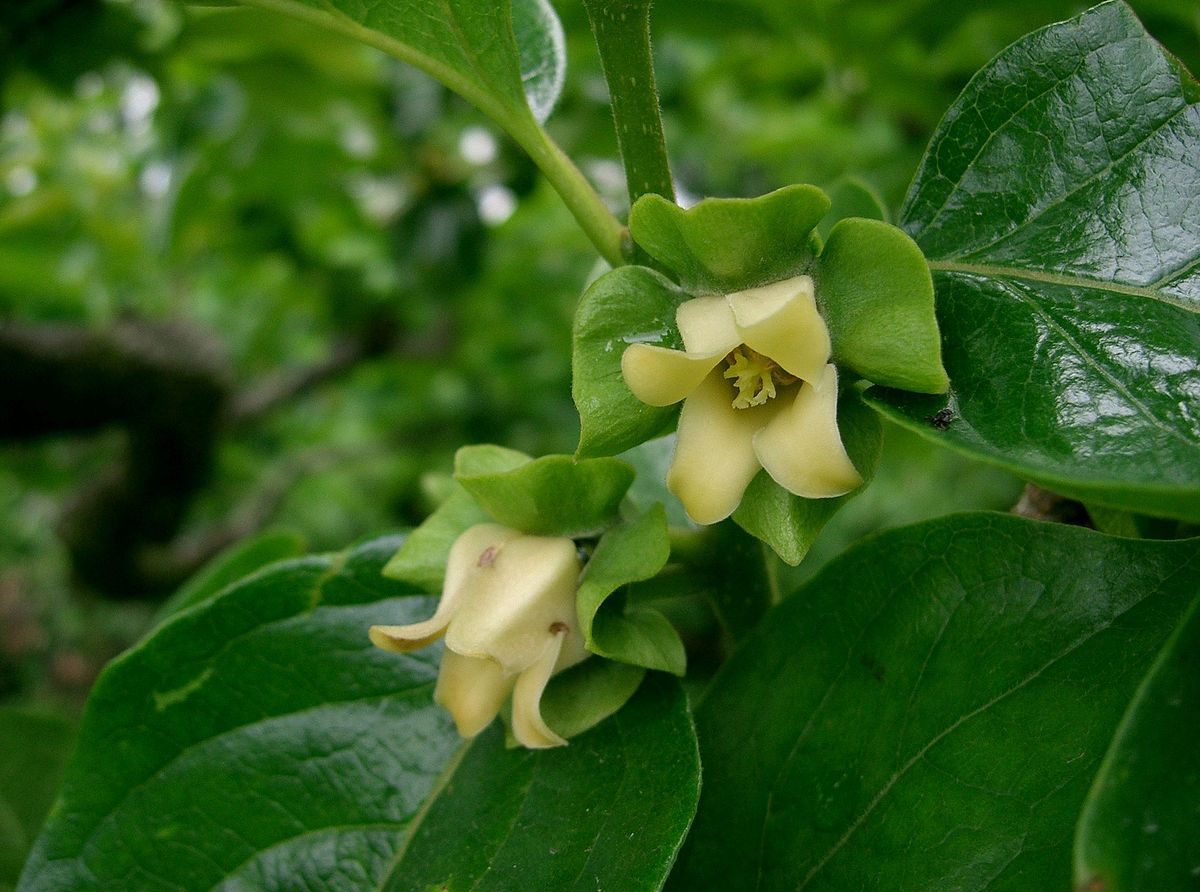Ebony trees
(Diospyros)

Description
The Diospyros genus, commonly known as ebony trees, encompasses a diverse group of flowering plants that belong to the family Ebenaceae. Known for their prized ebony wood, these trees have captivated the human imagination for centuries. With over 500 species distributed across tropical and subtropical regions worldwide, the Diospyros genus displays a remarkable variety of forms, sizes, and ecological adaptations. In this article, we will delve into the fascinating world of Diospyros, exploring its taxonomy, morphology, distribution, ecological significance, and economic importance. Taxonomy and Classification The Diospyros genus is classified within the order Ericales and the family Ebenaceae, which comprises about six genera and 500 species. Diospyros belongs to the subfamily Ebenoideae, which also includes the genera Maba and Royena. The name "Diospyros" is derived from the Greek words "dios" (divine) and "pyros" (grain or wheat), alluding to the fruit's resemblance to wheat grains. The genus is further divided into several sections based on morphological characteristics, including section Diospyros, section Oleifoliae, section Pruniflorae, and section Queretaroa. Morphology and Anatomy Ebony trees exhibit considerable variation in their morphological features, but they generally possess evergreen foliage and a dense, compact crown. The leaves are typically simple, alternate, and leathery in texture, exhibiting an elliptical to ovate shape. Some species may have serrated margins or a prominent midrib. The flowers of Diospyros are often small, inconspicuous, and unisexual, borne on axillary or terminal inflorescences. In most cases, the plants are dioecious, meaning male and female flowers are borne on separate individuals. The fruit of Diospyros is a berry-like structure known as a persimmon, characterized by its fleshy texture and sweet, sometimes astringent flavor. Distribution and Habitat Ebony trees are native to various regions of the world, including Africa, Asia, Australia, and the Americas. They exhibit a wide distribution across tropical and subtropical climates. Some species are well-adapted to arid conditions, while others thrive in wet, lowland areas. Diospyros ebenum, commonly known as Ceylon ebony, is native to Sri Lanka and South India, while Diospyros lotus, or date plum, is found in Europe, Asia, and North Africa. The Diospyros virginiana, or American persimmon, is native to the eastern United States. Ecological Significance The Diospyros genus plays a crucial role in various ecosystems. Ebony trees are often a dominant component of tropical rainforests, contributing to the structural integrity of the forest canopy. They provide essential habitat and food resources for a multitude of wildlife species, including birds, mammals, and insects. Additionally, some Diospyros species exhibit mutualistic relationships with specific pollinators, such as bees and butterflies, ensuring the continued propagation of the plants. Economic Importance Ebony wood, renowned for its dark, dense, and lustrous qualities, has been highly prized throughout human history. Diospyros ebenum, commonly referred to as true ebony or Ceylon ebony, is one of the most sought-after species. The wood's exceptional hardness, fine texture, and rich black color make it a preferred choice for high-quality furniture, musical instruments, and ornamental objects. However, due to extensive logging and unsustainable practices, many ebony species are now endangered or critically endangered. Conservation efforts and sustainable management practices are essential for the long-term preservation of ebony trees and their valuable wood resources. In addition to their wood, several Diospyros species have culinary and medicinal significance. The fruits of some persimmon species, such as Diospyros kaki, are widely consumed and appreciated for their sweet flavor and nutritional benefits. These fruits are consumed fresh or used in various culinary preparations, including desserts, jams, and beverages. Some cultures also utilize persimmons for their potential medicinal properties, which may include antioxidant, anti-inflammatory, and digestive benefits. Furthermore, certain Diospyros species have traditional uses in indigenous medicine systems. Extracts from different parts of the plants, including the leaves, bark, and roots, are believed to possess therapeutic properties. These medicinal applications range from treating digestive disorders and skin conditions to alleviating fever and promoting wound healing. However, it is important to note that scientific research is still ongoing to validate the efficacy and safety of these traditional uses. Conservation Efforts Given the increasing threats faced by ebony trees, conservation efforts are crucial to protect and preserve these remarkable species. International organizations, governments, and local communities are working together to implement sustainable management practices, regulate logging activities, and establish protected areas. Efforts are also being made to promote the cultivation of ebony trees through responsible and controlled plantations, aiming to alleviate pressure on wild populations. Additionally, raising awareness about the ecological and economic significance of ebony trees is vital. Education programs, community engagement, and initiatives to promote alternative sustainable materials can help reduce the demand for illegally sourced ebony wood. The involvement of local communities in conservation efforts is particularly important, as they play a vital role in safeguarding natural habitats and promoting sustainable livelihoods. Future Perspectives The future of ebony trees depends on our collective efforts to conserve and manage their populations sustainably. It is crucial to support research initiatives that focus on the ecology, genetics, and propagation techniques of ebony trees. Such studies can contribute to the development of effective conservation strategies, including habitat restoration, seed banking, and reintroduction programs. Moreover, exploring the potential of alternative materials and promoting sustainable practices in the woodworking industry can help reduce the pressure on wild ebony populations. Innovative technologies, such as 3D printing and engineered wood products, may offer alternatives to traditional ebony sources, thereby conserving natural habitats while meeting market demands. Conclusion The Diospyros genus, with its diverse array of ebony trees, represents an intriguing and valuable group of plants. From their distinctive wood to their ecological importance, these trees have a significant impact on both natural ecosystems and human societies. By embracing sustainable practices, supporting conservation efforts, and fostering responsible utilization, we can ensure the continued existence and appreciation of ebony trees for generations to come. Let us strive to protect and cherish the enigmatic world of the Diospyros genus.
Taxonomic tree:







